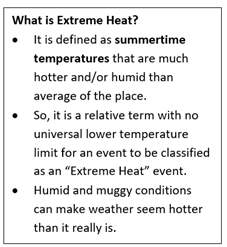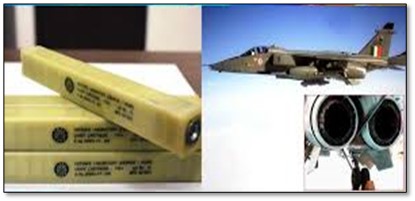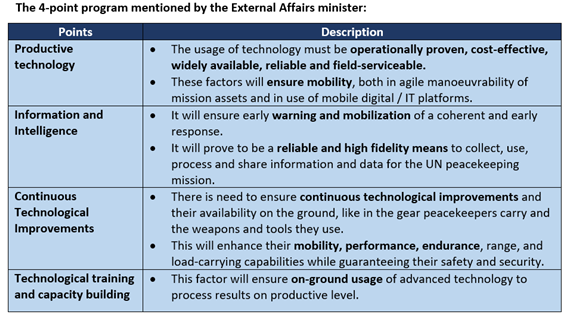Tuesday, 24th August 2021
E-tailers can’t store your card data, says RBI
News
RBI has issued new guidelines to the payment aggregators which prevents them from storing information of Debit/Credit Card.
About the News
- Once the new rule comes into effect from January 2022, credit and debit cardholders may have to enter their 16-digit card number every time they shop online as opposed to entering the card verification value (CVV) and the one-time password (OTP).
- The central bank has refused to change its decision to disallow e-commerce giants and merchants such as Amazon, Netflix, and Flipkart from storing customer card details in their databases.
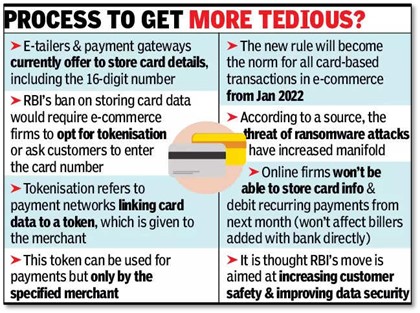
What is the Proposed System?
- Tokenization: The proposed system requires data to be entered every time or opt for tokenisation.
- Tokenization is the process of turning sensitive data into no sensitive data called "tokens”.
- The aim is to secure sensitive data by replacing the original data with an unrelated value of the same length and format.
- Benefits: The benefits associated to it are increasing customer safety and improving data security from the online frauds.
- UPI: The guidelines are proposed to be extended to Unified Payment Interface
Concerns associated with the proposed system
- The step will impact the government’s Digital India initiative and prevent smaller businesses from accessing pan-India or global markets.
- As the norms applies to foreign entities as well, it goes against the ‘Ease of Doing Business’ policy of the government
- It may also prevent foreign companies entering into Indian markets which would be a against the consumer interest in the long run.
Sources:
Regulation of Urban Co-operative Banks (UCBs)
In News
An RBI Expert Committee, under the chairmanship of NS Vishwanathan has suggested setting up an Umbrella Organization and a 4-tier structure to regulate UCBs.
About the News
The expert committee submitted its report in two parts.
- First part of the report lays out the vision document for the UCBs.
- Second part of the report has recommendedon different aspects of strengthening and functioning of UCBs.
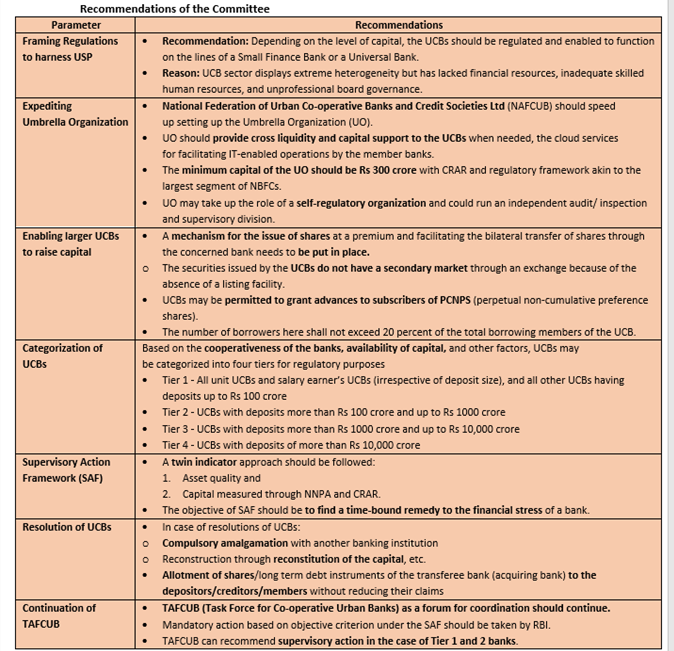
Sources:
Children’s Climate Risk Index
In News
‘The Climate Crisis Is a Child Rights Crisis: Introducing the Children’s Climate Risk Index’ was recently released by UNICEF.
Findings of the report
- High Vulnerability: Children are more vulnerable to climate and environmental shocks than adults due to physical and physiological vulnerability.They also face an increased risk of death.
- High Risk regions: Approximately 1 billion children, nearly half the world's children, live in one of the 33 countries classified as “extremely high-risk”.
- These children face a deadly combination of exposure to multiple climate and environmental shocks with a high vulnerability due to inadequate essential services, such as water and sanitation, healthcare and education.
- Climatic Shocks: 1 in 3 children worldwide, live in areas where at least four of climatic shocks overlap. The shocks include coastal flooding, riverine flooding, cyclones, vector borne diseases, pollution, heatwaves and water scarcity.
- Inverse relationships: The report reveals a disconnect between where greenhouse gas emissions are generated, and where children are enduring the most significant climate-driven impacts.
- The 33 ‘extremely high-risk’ countries collectively emit just 9 per cent of global CO2 emissions
- India’s Status: According to a new UNICEF report, India is one of four South Asian nations where children are most vulnerable to the effects of climate change, which jeopardize their health, education, and protection.
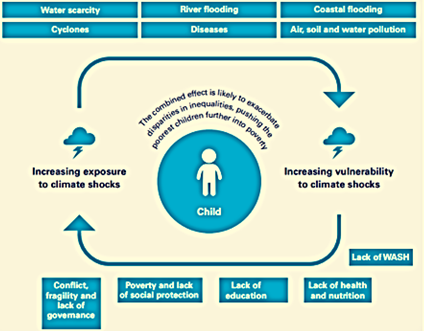
The Children’s Climate Risk Index (CCRI)
- CCRIprovides the first comprehensive view/conceptual framework and an initial assessment of children’s exposure and vulnerability globally to the impacts of climate change in order to help prioritize action for those most at risk.
- It ranks countries based on children’s exposure to climate and environmental shocks/hazards, such as cyclones and heatwaves, as well as their vulnerability to those shocks, based on their access to essential services.
- The CCRI is structured according to two central pillars:
- Exposure to climate and environmental hazards, shocks and stresses.
- Child vulnerability.
- Across the two categories, the CCRI brings 57 variables together to measure risk across every country and region.
Source:
- The Climate Crisis is a Child Rights Crisis-Introducing the Children’s Climate Risk Index
- Children in India at extremely high risk of climate crisis impacts, warns UNICEF
- The climate crisis is a child rights crisis: Introducing the children’s climate risk index
- Children in India, 3 other South Asian nations at extremely high risk of climate crisis impacts: UNICEF
- The Climate Crisis is a Child Rights Crisis-Introducing the Children’s Climate Risk Index
National Monetisation Pipeline
In News
The Union government launched the National Monetization Pipeline (NMP) Scheme on August 23, to monetise assets worth Rs 6,00,000 crore between 2021-22 and 2024-25.
About the News
- The Government has unveiled a four-year National Monetisation Pipeline to unlock value in brownfield projects by engaging the private sector.
- Considering that infrastructure creation is inextricably linked to monetisation, the period for NMP has been decided so as to be co-terminus with balance period under National Infrastructure Pipeline (NIP).
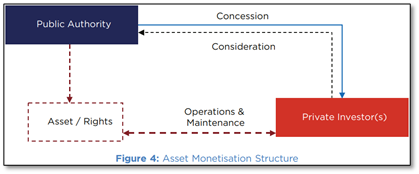
What is Asset Monetization?
Asset monetisation, also commonly referred to as asset or capital recycling, is globally a widely used business practice. This consists of limited period transfer of performing assets (or disposing of non-strategic / underperforming assets) to unlock “idle” capital and reinvesting it in other assets or projects that deliver improved or additional benefits.
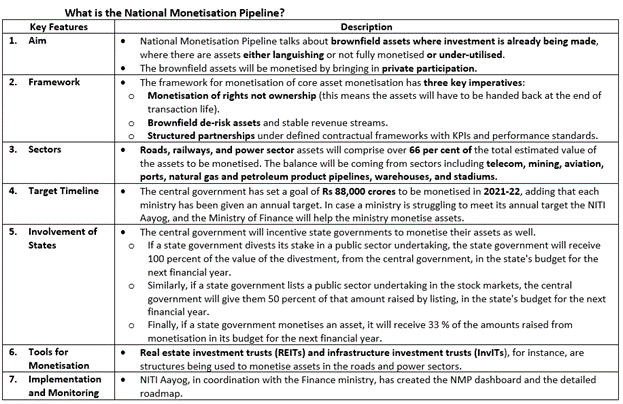
What is the government trying to achieve through NMP?
- Utilization of Assets: Many public sector assets are sub-optimally utilised and could be appropriately monetized to create greater financial leverage and value for the companies and government equity invested in them.
- Monetization and Investment cycle: By bringing in private participation, the monetization of assets can be made better, and the resource obtained by monetisation can be put in for further investment into infrastructure building.
- Effective Recycling: The Infrastructure Investment Trust (InvIT) model which provides a way for recycling of capital invested in operational assets in an efficient manner, could be adopted to achieve the desired objective.
- It would attract both domestic and global investors, including sovereign wealth funds, retail investors and institutional investors such as pension funds.
- Financial Management: The asset monetisation programme will create hitherto unexplored sources of income for the company and its shareholders and contribute to a more accurate estimation of public assets which would help in better financial management of government/public resources over time.
- Employment generation: Returns for PSUs on asset monetization, coupled with private sector bidding for these assets, will put these assets to productive use and generate employment.

What can be the Possible Challenges to NMP?
- Investor Issues: There is possibility of lack of interest among investors in low value sectors like the national highways below four lanes, as they may not be as lucrative.
- Utilization of Funds: There is need for clarity on the utilization of funds generated through the monetisation. It should not be used for the government’s short-term budgetary support and must adhere strictly to company law norms.
- Resistance: It is bound to face resistance on ideological grounds and may even be accused of selling the “family silver”. There could also be resistance by vested interests who are illegally occupying unutilised government/PSU-owned land often with political backing.
- Identification Problem: Question arises on how to segregate some operating sections of an asset from the non-operating ones. Example: Are we going to treat operating sections of the freight corridor as an underutilised asset?
- Land Monetization problem: Experts feel one of the challenges will be unified mapping of land which comes under administrative control of various ministries and CPSEs.
- DIPAM is in the process of studying several global examples of land banks and will take a call on how to put them on the selling block.
- Miscellaneous Issues: Some challenges that may affect the NMP roadmap are lack of identifiable revenue streams in various assets, level of capacity utilisation in gas and petroleum pipeline networks and dispute resolution mechanism.
Way Forward
- Commission for Identification: The best course of action would be to constitute a commission for identifying assets for monetisation; as also the modus operandi of the monetisation and the use of funds. This commission would create a transparent mechanism open to viewpoints from all stakeholders concerned and minimising the scope for resistance and opposition.
- Transparent Process: For the monetisation idea to succeed, it is important for the government to be focussed, adhere to the timelines set and take the general public into confidence on the process and the ultimate beneficiaries.
Conclusion:
Monetisation of assets is not new, but the government has finally organised it in baskets, set targets, identified impediments, and put in place a framework. While unlocking assets worth Rs 6 lakh crore is an ambitious plan, resolving the impediments is expected to bring investors. Monetization of public assets is a complex and rigorous process that involves stakeholders’ management, efficient coordination, and detailed due diligence of the technical, operational and financial aspects of the assets.
Question: Discuss the various aspects of the National Monetisation Pipeline scheme. What can be the possible benefits and challenges to the scheme?
Sources:
- FM Sitharaman launches National Monetisation Pipeline scheme, to monetise assets worth Rs 6 lakh crore by 2024-25
- Roads to railways, Rs 6 lakh crore assets to be monetised, ownership will remain with Govt
- NATIONAL MONETISATION PIPELINE
- NATIONAL MONETISATION PIPELINE
- Sitharaman to launch National Monetisation Pipeline today
- Asset Monetisation
- Asset monetisation: Transparency holds the key
- Asset Monetisation: The Missing Model
This Day in History - Pluto
On August 24, 2006, the International Astronomical Union (IAU) downgraded the status of Pluto to that of “dwarf planet.” A “dwarf planet,” as defined by the IAU, is a celestial body in direct orbit of the Sun that is massive enough that its shape is controlled by gravitational forces rather than mechanical forces (and is thus ellipsoid in shape) but has not cleared its neighbouring region of other objects. Pluto, formerly known as the planet, was discovered on February 18, 1930.

Source:
Image of the Day - Fossil-free Steel
This is the image of first object crafted from fossil-free steel. Swedish firm HYBRIT announced recently that it made the world's first customer delivery of steel produced without using coal. As a replacement for steel, HYBRIT has turned to fossil-free electricity and hydrogen to power the steel-making process. The company's process uses hydrogen as the reductant, instead of coking coal. The firm also replaces the traditional coal-fired blast furnace with an electric arc furnace for the smelting process.

Source:
S-400 Missile System
- Context: Russia will likely begin to deliver S-400 to India by the end of 2021.
- S-400 is a long-range surface-to-air missile (SAM) system for the Indian Air Force (IAF) mainly designed to destroy aerial threats, like aircrafts, UAVs as well as ballistic and cruise missiles.
- They are developed to give Point Defence and Area Defence anti-air capabilities with flexible ranges from 40km to 400Km and targets flying at up to 30km altitude.
- The system has the capability to detect and destroy high and low targets, and can form an impenetrable grid of missiles.
- This system with four types of missiles (ranges between 40 km, 100 km, 200-km and 400 km) can be deployed in a very short time and is resistant to electronic jamming.
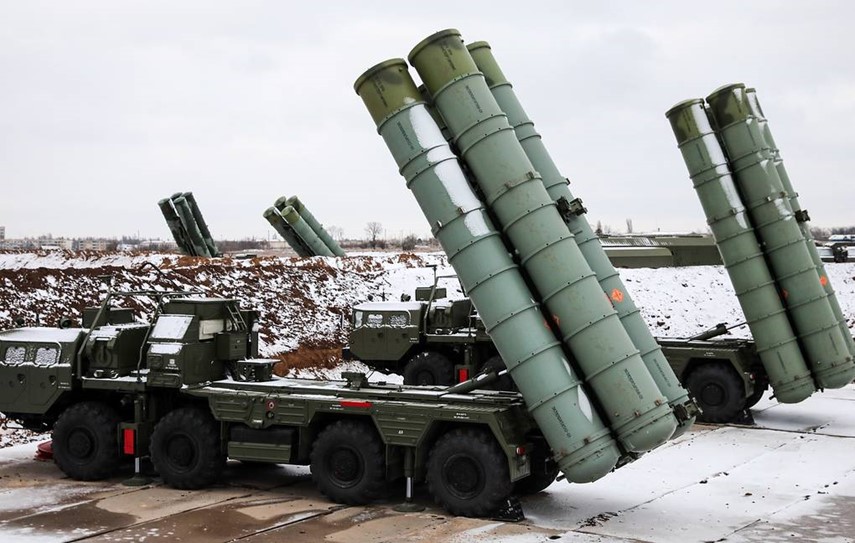
Source:
- S-400 missile system to soon reach India, says Russian company
- India to get world’s best Air Defence System S-400 from Russia; Check details
Image Source:
PM-UDAY Scheme
- Context: Over 4 lakh people have registered for the PM-UDAY scheme seeking ownership rights in unauthorized colonies.
- The Prime Minister Unauthorized Colonies in Delhi Awas Adhikar Yojana (PM-UDAY) was launched in 2019 by the Ministry of Housing and Urban Affairs to confer ownership rights to properties in 1,731 illegal colonies.
- The scheme allows registration of properties at nominal rates by recognising General Power of Attorney (GPA), Will, Agreement to Sell, Possession Letter and any other documents including documents evidencing payment of consideration held by residents of unauthorized colonies.
- The Delhi Development Authority (DDA) is the nodal agency to execute the scheme.
- The DDA has tied up with Common Service Centre (CSC) e-Governance Services India Limited, a special purpose vehicle under the Ministry of Electronics & IT, for carrying out online registration of citizens under the PM-UDAY scheme.
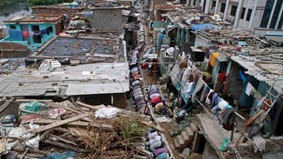
Source:
- Over 4 lakh register for PM-UDAY scheme in Delhi, but less than 20% fill applications
- Central government’s PM-UDAY scheme moving at snail’s pace
- 7,576 conveyance deeds and authorisation slips issued to the residents of Unauthorized Colonies in Delhi
Image Source:
ZyCoV-D Vaccine-Needle Free System
- Context: Zydus Cadila’s ZyCoV-D vaccine to be applied using a needle-free system.
- The needle-free system has been manufactured by the Colorado-based firm Pharma Jet.
- A specific model called the ‘Tropis’, which received regulatory approval in Europe in 2017 will be used by the firm.
- Tropis delivers vaccines intradermally- technology that propels liquid at high pressure to deliver vaccines through the skin without utilising needles.
- It has three components: the injector, the needle-free syringe, and a filling adapter.
- This vaccination is a four-step process: prepare the injector; fill the syringe; load the injector and give the injection at the deltoid region.
- A needle-free injector is said to be more accurate and reduces the infection-associated anxiety for the beneficiary and the vaccinator.
- It also does not give rise to any needlestick injuries to the health care workers.
- Each needle-free syringe is sterile, auto disabling, and cannot be reused.

Source:
Image Source:
Monsoon Break
Context: The Indian Meteorological Department (IMD) has predicted a likely break in the monsoon.
- Monsoon entering a break phase means that there is no intense system that can result in rainfall. It happens when the monsoon trough moves to another region.
- During the Monsoon season, there are periods when the Monsoon trough shifts closer to the foothills of Himalayas, which leads to sharp decrease in rainfall over most parts of the country.
- However, rainfall increases along the foothills of Himalayas, Northeast India, etc.
- The shift in Inter Tropical Convergence Zone leads to the shift of monsoonal trough.
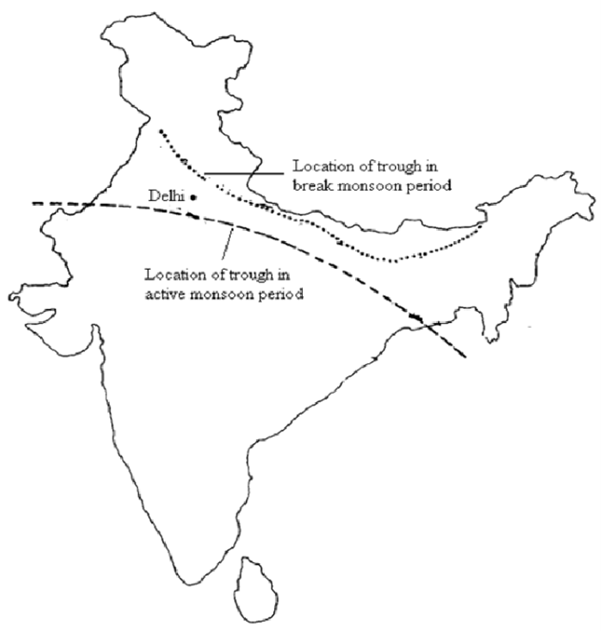
Source:
- Monsoon likely to enter partial ‘break’ phase from today: IMD
- Strong rain likely in Delhi after monsoon break: IMD
- WHAT IS 'BREAK' MONSOON PERIOD?
Image Source:
Finding a healthy way to cook
Essence: The Article talks about the need for finding healthy alternatives to traditional cooking practices using firewood and dung cakes by women in rural and low-income households. The government needs to recognise that the LPG cylinder distribution schemes such as Pahal (2013), Pradhan Mantri Ujjwala Yojana (PMUY, 2016) and recently announced Ujjwala 2.0 though have provided a means to access ‘Clean Energy’ but are a partial success, as the cylinders provided are used only for partial cooking along with the use of chulhas.
The Cost associated with the purchase of LPG cylinders, unavailability of distribution centres in proximity, low value attached to women’s time in production and low cost of women’s labour are the major hurdles in women getting access to clean fuel. Indoor pollution due to release of smoke containing carbon monoxide and carbon dioxide is a serious health concern associated with using traditional chulhas. The Government should take cognizance of the ground reality and should provide affordable alternatives such as solar cookers, smokeless chulhas, biogas plants and electric cookers along with the availability of LPG cylinders.
Why you should read this article?
- To understand that in order to make clean fuel available to poor household efforts beyond Ujjwala Yojana are needed.
- The Economic dimension associated with availability of clean fuel to women from rural and poor household.
Source:
What Indian lawmaking needs: More scrutiny, less speed
Essence: Article points towards a worrying trend of hurriedly passing of bills without their rigorous multilevel scrutiny. Such bills are replete with many issues which makes their efficient implementation difficult, defeating the whole purpose of law making.
Another concern aired by the article is fast tracking of non-urgent bills through ordinance route which bypasses parliamentary scrutiny, the heart of parliamentary democracy.
The author suggests that all bills should go through pre-legislative scrutiny by experts, the general public, and parliamentary committees. This should be followed by in-depth scrutiny by Parliament.
Why should you read this article?
- To understand issues with our legislative process.
- To understand what steps should be taken to make our legislative process more participatory and effective.
Sources:
It is Pakistan’s moment of triumph in Afghanistan, but India must bet on patience
Essence: The opinionated article talks about two specific transformations which would turn the turmoil of Afghanistan’s political order. One is focused on building a new political order within Afghanistan and the other is about gaining international recognition for the incipient Taliban-led government. The article also talks about the strategic stand of India and Pakistan concerning Afghanistan’s takeover by Kabul, in which India should signal a standby policy of wait watch how things turn up, where there exists a challenge of securing international legitimacy in Afghanistan. The task for Pakistan does not seem to be an easy one taking into recognition of its disturbed political order.
Why you should read this article?
· To understand Pakistan’s stand on the international level concerning Kabul takeover by the Taliban.
· To understand the context of why Pakistan’s primary task is to secure its international legitimacy.
Sources:
Fight against Covid: Case-study of China
Background
- China has seen no new locally transmitted cases of COVID-19 for the first time since July, offering signs that the current outbreak may be tapering off soon.
How did China achieve this feat?
- Authorities imposed tough counter-epidemic measures like mass testing for millions of people to identify and isolate carriers.
- It stipulated four categories of peopleto be separated from the rest: confirmed cases, suspected cases, people with symptoms for whom infection could not be ruled out, and contacts.
- Confirmed cases were sent for treatment while the latter three were sent to centralised isolation facilities.
- China has taken a zero-tolerance approach towards containing new infection.
- Community workers and volunteers were set up at 24-hour checkpoints to register anyone entering or leaving.
- Flights in and out of few cities have remained suspended to curtail the spread of infection.
What is the purpose of the case study?
- To understand that emergency situation needs different set of measures.
- To identify measures needed to control pandemic
Sources:
Share the article
Get Latest Updates on Offers, Event dates, and free Mentorship sessions.

Get in touch with our Expert Academic Counsellors 👋
FAQs
UPSC Daily Current Affairs focuses on learning current events on a daily basis. An aspirant needs to study regular and updated information about current events, news, and relevant topics that are important for UPSC aspirants. It covers national and international affairs, government policies, socio-economic issues, science and technology advancements, and more.
UPSC Daily Current Affairs provides aspirants with a concise and comprehensive overview of the latest happenings and developments across various fields. It helps aspirants stay updated with current affairs and provides them with valuable insights and analysis, which are essential for answering questions in the UPSC examinations. It enhances their knowledge, analytical skills, and ability to connect current affairs with the UPSC syllabus.
UPSC Daily Current Affairs covers a wide range of topics, including politics, economics, science and technology, environment, social issues, governance, international relations, and more. It offers news summaries, in-depth analyses, editorials, opinion pieces, and relevant study materials. It also provides practice questions and quizzes to help aspirants test their understanding of current affairs.
Edukemy's UPSC Daily Current Affairs can be accessed through:
- UPSC Daily Current Affairs can be accessed through Current Affairs tab at the top of the Main Page of Edukemy.
- Edukemy Mobile app: The Daily Current Affairs can also be access through Edukemy Mobile App.
- Social media: Follow Edukemy’s official social media accounts or pages that provide UPSC Daily Current Affairs updates, including Facebook, Twitter, or Telegram channels.

